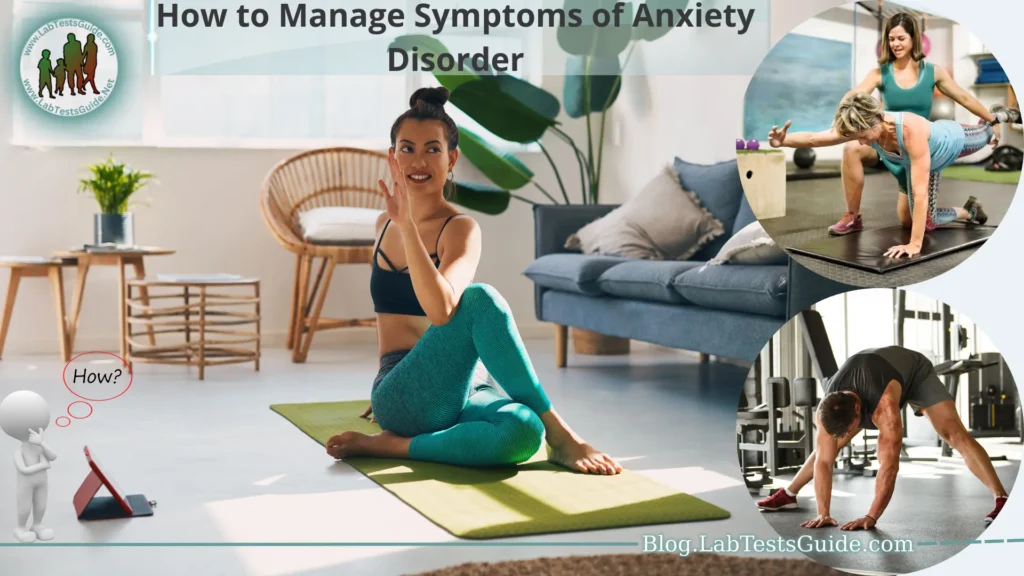Flexibility refers to the range of motion of your joints and the ability of your muscles and connective tissues to stretch and move freely. It is an essential component of overall fitness and plays a crucial role in various activities, such as sports performance, injury prevention, and daily movement.

Having good flexibility offers numerous benefits, including improved posture, enhanced athletic performance, increased joint mobility, reduced muscle tension and soreness, and decreased risk of injuries. Whether you’re an athlete looking to improve your athletic abilities or someone who wants to maintain a healthy and active lifestyle, working on your flexibility can be highly beneficial.
What is Flexibility?
- Definition: Flexibility refers to the range of motion (ROM) available at a joint or group of joints.
- Range of Motion: It involves the ability of muscles and connective tissues to lengthen and allow for fluid movement.
- Factors Affecting Flexibility: Flexibility is influenced by muscle elasticity, joint structure, the nervous system, and connective tissue health.
- Individual Differences: People have varying levels of natural flexibility, but it can be improved with consistent training.
- Specificity: Flexibility is specific to each joint and muscle group, meaning that different areas of the body can have varying degrees of flexibility.
- Benefits: Having good flexibility offers advantages such as improved athletic performance, enhanced posture, reduced risk of injuries, and increased overall physical well-being.
- Flexibility Training: Regular stretching exercises and targeted flexibility training can help improve flexibility over time.
- Types of Flexibility: There are different types of flexibility, including static flexibility (ability to hold a stretched position) and dynamic flexibility (ability to move through a full range of motion).
- Stretching Techniques: Effective stretching techniques include static stretching (holding a stretch for a certain period), dynamic stretching (active movements through a full ROM), and proprioceptive neuromuscular facilitation (PNF) stretching (combining stretching with muscle contractions).
- Progression and Consistency: Improving flexibility requires consistent practice and gradual progression, gradually increasing the intensity and duration of stretching exercises.
- Complementary Activities: Engaging in activities like strength training, cardiovascular exercise, foam rolling, and mobility exercises can support and enhance flexibility.
- Age Considerations: Flexibility can be improved at any age, and specific considerations exist for children, adults, and older adults.
How to Improve Flexibility:
- Stretching Exercises: Incorporate regular stretching exercises into your routine to target specific muscle groups and joints. Focus on both static stretches (holding a stretch) and dynamic stretches (active movements through a full range of motion).
- Warm-up Properly: Before stretching, warm up your muscles with light aerobic exercises such as jogging or cycling. This helps increase blood flow and prepares your muscles for stretching.
- Gradual Progression: Start with stretches that are comfortable and gradually increase the intensity and duration over time. Avoid forcing your body into positions that cause pain or discomfort.
- Consistency is Key: Consistently perform flexibility exercises at least two to three times a week to see improvements. Set aside dedicated time for stretching and make it a regular part of your fitness routine.
- Targeted Stretching: Identify areas of your body that are less flexible and focus on specific stretches for those areas. Common areas include the hamstrings, hips, shoulders, and lower back.
- Proper Technique: Pay attention to proper technique during stretching. Maintain good posture, breathe deeply, and avoid bouncing or jerking movements, as they can lead to injury.
- Proprioceptive Neuromuscular Facilitation (PNF): Consider incorporating PNF stretching techniques, which involve contracting and relaxing the muscles during stretches, to improve flexibility further.
- Yoga and Pilates: Practice yoga or Pilates, as these disciplines emphasize flexibility, balance, and body awareness. They offer a variety of poses and exercises that can help improve overall flexibility.
- Incorporate Active Movement: Engage in activities that promote active movement through a full range of motion, such as dance, martial arts, or gymnastics. These activities can enhance flexibility while providing a fun and dynamic workout.
- Foam Rolling and Self-Myofascial Release: Utilize foam rollers or self-massage techniques to release tension and tightness in muscles and connective tissues, aiding in improved flexibility.
- Listen to Your Body: Pay attention to your body’s cues and avoid pushing yourself too far beyond your comfort zone. Stretch to a point of mild tension, but never to the point of pain.
- Be Patient: Improving flexibility takes time and consistent effort. Avoid expecting immediate results and celebrate small progress along the way.
Understanding Flexibility:
Here are some important aspects to consider when understanding flexibility.
- Types of Flexibility: Flexibility can be categorized into two main types: static flexibility and dynamic flexibility. Static flexibility refers to the ability to hold a stretched position, while dynamic flexibility refers to the ability to move joints through a full range of motion with control and without excessive effort.
- Factors Affecting Flexibility: Several factors influence an individual’s flexibility, including genetics, age, gender, joint structure, muscle elasticity, body composition, and previous injury history. While some of these factors are beyond our control, flexibility can still be improved through appropriate training and regular practice.
- Benefits of Flexibility: Developing and maintaining good flexibility offer numerous benefits. It enhances athletic performance by allowing for efficient and fluid movement patterns, improves posture and body alignment, reduces the risk of injuries by enabling joints to move through their intended range without strain, and promotes overall physical well-being.
- Assessing Flexibility: Assessing your current level of flexibility can help identify areas that need improvement. Common flexibility tests include the sit-and-reach test for hamstring and lower back flexibility and the shoulder flexibility test. These assessments can provide a baseline and help track progress over time.
- Flexibility Training: Flexibility can be improved through targeted stretching exercises and regular flexibility training. Stretching techniques may include static stretching (holding a stretch for a specific duration), dynamic stretching (moving through a full range of motion), and proprioceptive neuromuscular facilitation (PNF) stretching (combining stretching with muscle contractions).
- Flexibility and Injury Prevention: Good flexibility plays a vital role in injury prevention. It helps maintain proper joint alignment, reduces muscle imbalances, enhances muscular control and coordination, and allows for efficient movement patterns, all of which contribute to minimizing the risk of injuries during physical activities.
- Individual Variation: It is essential to recognize that flexibility levels can vary greatly among individuals. Each person has unique strengths and limitations in different joints and muscle groups. Emphasizing personal progress and avoiding comparisons with others is crucial when working on improving flexibility.
Effective Stretching Techniques:
Here are some effective stretching techniques to incorporate into your routine.
- Static Stretching: This involves holding a stretch for a specific duration, typically around 20-30 seconds. Focus on the target muscle group, gently lengthen it to a comfortable point, and hold the position without bouncing or jerking movements. Examples include hamstring stretches, calf stretches, and chest stretches.
- Dynamic Stretching: Dynamic stretches involve controlled movements through a full range of motion. These stretches help warm up muscles and prepare them for activity. Examples include arm circles, walking lunges, and leg swings.
- Proprioceptive Neuromuscular Facilitation (PNF): PNF stretching combines static stretching with muscle contractions to improve flexibility. The most common technique is the “Hold-Relax” method. Start with a static stretch, then contract the targeted muscle group for 5-10 seconds. Relax the muscle and move further into the stretch. This process can be repeated for a few cycles.
- Active Isolated Stretching (AIS): AIS involves active muscle contractions of the antagonist muscle followed by a gentle stretch of the target muscle. Hold the stretch for 1-2 seconds and repeat several times. This method helps improve flexibility without triggering a protective muscle contraction.
- Ballistic Stretching (Not Recommended): Ballistic stretching involves using bouncing or jerking movements to force a stretch beyond the normal range of motion. However, this technique can be risky and may lead to muscle strains or other injuries. It is generally not recommended, especially for individuals who are not properly trained or conditioned.
- Yoga and Pilates: Both yoga and Pilates incorporate various stretching techniques that promote flexibility, strength, and body awareness. These disciplines often include a combination of static and dynamic stretches, along with controlled breathing and mindfulness.
- Foam Rolling and Self-Myofascial Release: Foam rolling and self-massage techniques using tools like foam rollers, massage balls, or mobility balls can help release muscle tension and improve flexibility. Roll or apply pressure on tight areas, targeting muscles and fascia to promote relaxation and increase range of motion.
- Stretching Specific Muscle Groups: Depending on your needs and activities, focus on stretching specific muscle groups that tend to be tight or restricted. Examples include hamstrings, hip flexors, quadriceps, calves, chest, shoulders, and lower back.
Flexibility Training Programs:
Here are examples of different levels of flexibility training programs you can follow.
Beginner’s Flexibility Routine:
- Start with a gentle warm-up, such as light aerobic exercises or brisk walking.
- Perform a series of dynamic stretches for major muscle groups, such as leg swings, arm circles, and torso rotations.
- Move on to static stretches, holding each stretch for 20-30 seconds. Focus on areas like the hamstrings, calves, hips, chest, and shoulders.
- Include stretches for the neck, lower back, and other specific areas of tightness or discomfort.
- Repeat the routine two to three times per week, gradually increasing the duration and intensity of the stretches as your flexibility improves.
Intermediate Flexibility Routine:
- Begin with a thorough warm-up that includes light cardiovascular exercise and dynamic movements to prepare the body.
- Incorporate dynamic stretching exercises that mimic the movements of your chosen activities or sports. For example, walking lunges, high kicks, or hip rotations.
- Move on to more challenging static stretches, holding each stretch for 30-60 seconds. Focus on areas that are particularly tight or limiting your range of motion.
- Introduce PNF stretching techniques, such as the “Hold-Relax” method, to further improve flexibility.
- Consider adding yoga or Pilates sessions into your routine to enhance flexibility, strength, and body awareness.
- Perform the routine two to four times per week, allowing for recovery days in between.
Advanced Flexibility Routine:
- Begin with a comprehensive warm-up that includes aerobic exercise, dynamic movements, and foam rolling to release muscle tension.
- Incorporate a wide range of dynamic stretches, focusing on multiple muscle groups and joints. Use controlled movements to gradually increase the range of motion.
- Progress to advanced static stretches, holding each stretch for 60 seconds or more.
- Include PNF stretching techniques, such as contract-relax, contract-relax-agonist-contract (CRAC), or contract-relax-antagonist-contract (CRAC), to further enhance flexibility.
- Explore more challenging yoga poses and advanced Pilates exercises to challenge your flexibility and strength.
- Perform the routine three to five times per week, with variations and modifications to continually challenge your flexibility limits.
Tips for Progressing Flexibility:
Here are some tips to help you progress effectively and safely in your flexibility journey.
- Consistency and Regular Practice: Make flexibility training a regular part of your routine. Aim for at least two to three sessions per week to see noticeable improvements. Consistency is key, so even shorter sessions done consistently can be more effective than sporadic longer sessions.
- Gradual Progression: Start with stretches that are comfortable and gradually increase the intensity and duration over time. Pushing too hard or forcing your body into extreme stretches can lead to injury. Respect your body’s limits and progress gradually to allow your muscles and connective tissues to adapt.
- Active vs. Passive Stretching: Incorporate both active and passive stretching into your routine. Active stretching involves using your own muscles to move into a stretch, while passive stretching involves using external assistance, such as a partner or props. Both types have their benefits and can be combined to promote flexibility gains.
- Proprioceptive Neuromuscular Facilitation (PNF) Techniques: PNF stretching, such as the “Hold-Relax” and “Contract-Relax” methods, can be highly effective in improving flexibility. Incorporate PNF techniques into your routine to further challenge and lengthen your muscles.
- Focus on Specific Areas: Identify areas of your body that are less flexible or limiting your overall mobility. Focus on targeted stretches for those areas to address specific tightness or restrictions. This can help you make significant progress in those areas while maintaining overall flexibility.
- Listen to Your Body: Pay attention to your body’s feedback during stretching exercises. Mild discomfort or tension is expected, but avoid pushing into sharp or intense pain. Respect any discomfort or limitations and adjust the intensity or duration of stretches accordingly. Stretch to a point that feels challenging yet comfortable.
- Recovery and Rest: Allow your body time to recover and adapt to the stretching exercises. Include rest days in your routine to avoid overtraining and prevent muscle fatigue or strain. Adequate sleep, hydration, and nutrition also contribute to optimal recovery and flexibility gains.
- Combine Flexibility with Strength Training: Strength and flexibility go hand in hand. Incorporate strength training exercises that target the muscles and joints involved in your flexibility goals. Strengthening the muscles in their lengthened position can help support and maintain your newfound flexibility.
- Monitor and Track Progress: Keep a record of your flexibility exercises and track your progress over time. Note improvements in range of motion, increased comfort in stretches, or achievements in specific flexibility goals. This can provide motivation and help you see how far you’ve come.
- Seek Professional Guidance: If you’re new to flexibility training or have specific concerns or limitations, consider seeking guidance from a qualified fitness professional, physical therapist, or a certified yoga or Pilates instructor. They can provide expert advice, tailor exercises to your needs, and ensure proper form and technique.
Complementary Activities for Flexibility:
Here are some complementary activities to consider.
- Strength Training: Building strength in the muscles surrounding the joints can support and stabilize them, allowing for improved flexibility. Include resistance exercises that target major muscle groups, such as squats, lunges, deadlifts, and push-ups. Focus on performing exercises through a full range of motion to further promote flexibility gains.
- Yoga: Yoga combines physical postures (asanas), breathing techniques, and mindfulness. It emphasizes flexibility, balance, and body awareness. Regular participation in yoga classes or practicing yoga at home can enhance your flexibility while also improving strength, balance, and overall well-being.
- Pilates: Pilates is a low-impact exercise method that focuses on core strength, stability, and body alignment. Many Pilates exercises involve controlled movements that promote flexibility, particularly in the core, hips, and spine. The combination of stretching, strengthening, and controlled movement in Pilates can complement your flexibility training.
- Dance: Dance forms like ballet, contemporary dance, and jazz often require a high level of flexibility. Participating in dance classes or incorporating dance-inspired movements into your routine can be an enjoyable way to improve flexibility, coordination, and body awareness.
- Martial Arts: Martial arts disciplines, such as Taekwondo, karate, and capoeira, often incorporate dynamic and static stretches as part of their training. These movements can improve flexibility, agility, and mobility while also developing discipline and self-defense skills.
- Cardiovascular Exercise: Engaging in regular cardiovascular activities, such as running, swimming, or cycling, can indirectly support flexibility. Cardiovascular exercise increases blood flow, warms up the muscles, and helps maintain overall fitness, which can contribute to improved flexibility and mobility.
- Foam Rolling and Self-Myofascial Release: Foam rolling is a form of self-massage that targets muscles and fascia to release tension and improve tissue mobility. Incorporate foam rolling exercises into your routine, focusing on areas of tightness or muscle knots. Self-myofascial release techniques using massage balls or mobility tools can also be beneficial for improving flexibility.
- Mobility Exercises: Mobility exercises are designed to improve joint mobility and movement efficiency. They often involve controlled movements through a full range of motion, such as shoulder circles, hip rotations, or spinal twists. Adding mobility exercises to your warm-up or cool-down routine can help improve joint function and support flexibility gains.
- Stretching Classes or Workshops: Consider attending stretching classes, workshops, or group sessions that focus specifically on flexibility and mobility. These sessions are often led by experienced instructors who can guide you through proper stretching techniques and offer variations and progressions suitable for different levels.
Flexibility for Different Age Groups:
Here are some considerations for each age group regarding flexibility.
Flexibility in Children and Adolescents:
- Children generally have good natural flexibility. Encourage them to engage in activities that promote movement and flexibility, such as gymnastics, dance, or martial arts.
- Focus on age-appropriate stretching exercises and activities that promote full-body mobility.
- Emphasize active play, dynamic movements, and games that involve stretching and reaching.
- Avoid excessive static stretching in young children, as their joints and connective tissues are still developing. Instead, incorporate dynamic stretches and movements that encourage a wide range of motion.
Flexibility in Adults:
- Adults can benefit from regular flexibility training to maintain or improve range of motion and joint mobility.
- Incorporate a combination of static and dynamic stretching exercises into your routine.
- Pay attention to specific areas that tend to tighten up due to work or lifestyle factors, such as the hips, lower back, and shoulders.
- If you have any pre-existing conditions or injuries, consult with a healthcare professional or a qualified fitness instructor to ensure safe and appropriate flexibility exercises.
Flexibility in Older Adults:
- Maintaining flexibility becomes increasingly important as we age to prevent stiffness, maintain independence, and reduce the risk of falls.
- Prioritize stretching exercises that target major muscle groups and areas prone to tightness or limited range of motion, such as the hips, spine, and shoulders.
- Incorporate gentle and controlled movements to gradually improve flexibility and mobility.
- Warm up thoroughly before stretching and listen to your body’s limits to avoid strain or injury.
- Consider activities like yoga, tai chi, or water-based exercises that promote flexibility, balance, and joint mobility while minimizing impact on the joints.
Common Mistakes and Avoiding Injury:
Here are some common mistakes to avoid and tips for staying safe during your flexibility training.
- Overstretching: One of the most common mistakes is trying to force your body into extreme stretches beyond your current range of motion. This can lead to strains, sprains, or muscle tears. Respect your body’s limits and progress gradually.
- Bouncing or Ballistic Stretching: Avoid bouncing or using jerking motions during stretching exercises. This can cause the muscles to tighten and increase the risk of injury. Instead, focus on controlled and smooth movements through the full range of motion.
- Ignoring Muscle Imbalances: Imbalances between opposing muscle groups can affect flexibility and lead to compensations and injuries. Ensure you stretch and strengthen both the agonist and antagonist muscle groups to maintain balance and promote healthy movement patterns.
- Lack of Warm-up: Skipping a proper warm-up before stretching can increase the risk of muscle strains or pulls. Prioritize a warm-up that includes light aerobic activity to increase blood flow, raise the body’s temperature, and prepare the muscles for stretching.
- Neglecting Safety Guidelines: Pay attention to safety guidelines and proper form during stretches. Use appropriate equipment, such as mats or blocks, when needed. Avoid stretches that put excessive stress on vulnerable joints or areas prone to injury.
- Holding Your Breath: Breathing is crucial during stretching exercises. Avoid holding your breath, as it can increase tension and limit the effectiveness of the stretch. Instead, take slow, deep breaths and exhale as you relax into the stretch.
- Pushing Through Pain: Pain is a signal from your body indicating potential injury. Never push through sharp or intense pain during stretches. Discomfort or mild tension is normal, but if you experience pain, back off and reassess your technique or seek professional guidance.
- Not Listening to Your Body: It’s important to listen to your body’s feedback during flexibility training. If a stretch feels too intense or uncomfortable, modify or find alternative stretches that are more suitable for your current level of flexibility.
- Lack of Variety: Avoid sticking to the same stretches and routines for an extended period. Incorporate variety in your flexibility training to target different muscle groups and challenge your body in different ways. This can help prevent overuse injuries and promote balanced flexibility.
- Seeking Professional Guidance: If you’re new to flexibility training or have specific concerns or limitations, it’s advisable to seek guidance from a qualified fitness professional or physical therapist. They can provide personalized advice, correct your form, and design a safe and effective flexibility program tailored to your needs.
FAQs:
What is the ideal frequency of flexibility training?
Aim for at least two to three sessions per week. Consistency is important for making progress in flexibility. However, daily stretching or incorporating flexibility exercises into your regular workouts can also be beneficial.
Can flexibility be improved at any age?
Yes, flexibility can be improved at any age. While flexibility may naturally decline with age, regular stretching exercises and flexibility training can help maintain and improve flexibility at any stage of life.
How long does it take to see improvements in flexibility?
The time it takes to see improvements in flexibility varies depending on several factors, including your current level of flexibility, consistency of training, and individual differences. With regular practice, you may start noticing improvements in a matter of weeks to a few months.
Should I stretch before or after exercise?
It is generally recommended to perform a dynamic warm-up before exercise, focusing on movements that prepare the muscles and joints for the specific activity. Static stretching is more effective after exercise as part of a cool-down routine to help relax and lengthen the muscles.
Are there specific stretches for specific sports or activities?
Yes, certain stretches can be more beneficial for specific sports or activities. For example, runners may focus on stretches that target the hips, calves, and hamstrings, while swimmers may prioritize shoulder and upper back stretches. Consider the movement patterns and muscles used in your activity to guide your stretching routine.
Can I stretch if I have an injury or a chronic condition?
If you have an injury or a chronic condition, it’s essential to consult with a healthcare professional or a qualified physical therapist before engaging in stretching exercises. They can provide appropriate guidance based on your specific condition and help you modify stretches if needed.
Is it better to stretch before or after strength training?
It is generally recommended to perform a dynamic warm-up before strength training and save static stretching for after the workout. Stretching before strength training may temporarily reduce muscle strength and power. However, incorporating flexibility exercises into your routine can still be beneficial for overall flexibility and mobility.
Can I improve flexibility without stretching?
While stretching is the most direct way to improve flexibility, other activities can indirectly contribute to improved flexibility. Activities like yoga, Pilates, dance, and martial arts involve movements that promote flexibility, body awareness, and mobility.
Are there risks of overstretching?
Yes, overstretching can lead to injuries such as strains, sprains, or muscle tears. It’s important to respect your body’s limits, progress gradually, and avoid forcing stretches beyond what is comfortable. Listen to your body’s feedback and modify stretches or seek professional guidance if needed.
Conclusion:
In conclusion, flexibility is a valuable component of physical fitness that can be improved through regular practice and targeted stretching exercises. By incorporating proper warm-up techniques, gradually progressing in intensity and duration, and listening to your body’s cues, you can safely enhance your range of motion and reap the benefits of improved flexibility. Complementary activities such as strength training, yoga, Pilates, and other forms of exercise can further support and enhance flexibility gains. Remember to prioritize safety, avoid common mistakes, and seek guidance when needed. With consistency and patience, you can unlock your body’s potential and enjoy the increased freedom of movement and overall well-being that comes with improved flexibility.






